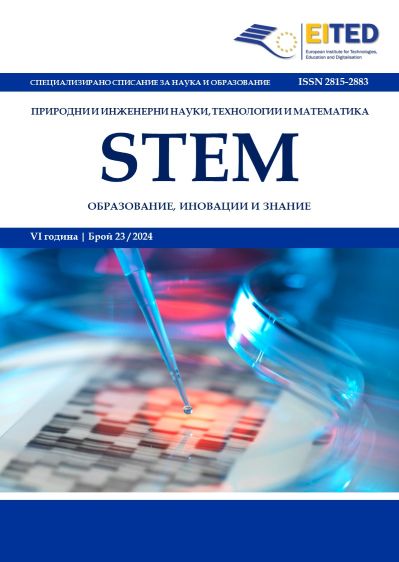Проектно-базирано обучение и STE(A)M подход в урока по компютърно моделиране “Конструиране на разклонени алгоритми” в четвърти клас
Project-Based Learning and the STE(A)M Approach in the Fourth-Grade Computer Modeling Lesson “Construction of Branched Algorithms”
Author(s): Maria KarabalievaSubject(s): Social Sciences, Education, Review, General Reference Works, School education, Pedagogy
Published by: Европейски институт за технологии, образование и дигитализация
Keywords: Project-based learning; STE(A)M, branching algorithms; smart fan; smart device;
Summary/Abstract: The aim of the article is to demonstrate how project-based learning and the STE(A)M approach can be used to enhance students' digital skills and their creative and social development. Through working with smart devices, students acquire practical skills with real-world applications in the educational process and future professional life. Teamwork encourages collaboration, respect for differences, and joint problem-solving. The "Smart Fan" project successfully illustrates the application of branching algorithms to create functional devices. Integrating project-based lessons and experiential learning in computer modeling in third grade can have multiple benefits for students. Some of the main benefits include: stimulating active learning; development of computer skills; stimulating creative thinking; preparation for future technological challenges; develop problem solving; experiential learning. The project "Dance the code of the right dance" is adapted to the educational content of several subjects and topics:• Man and Society – Society;• Fine art - Cherga;• STEM programming - Project "Emotional Pedometer";• Computer modeling - Repetitive actions. Cycle;• Physical education and sport - Right dance;• English language - Colors.The teaching methods are problem-based learning and learning through inquiry/experiential learning. Training takes place in an online development environment https://makecode.microbit.org/ and lessons are structured and delivered to students in Google Classroom. Students in the class learn on a 1:1 model (one device for each student) and each child is provided with a Micro:bit board. The idea of the activity is that, through interdisciplinary connections, the students will see in practice the applicability of algorithms and that the standard model of teaching will be broken by using the arts.
Journal: STEM образование, иновации и знание
- Issue Year: 2024
- Issue No: 23
- Page Range: 52-59
- Page Count: 8
- Language: Bulgarian
- Content File-PDF

